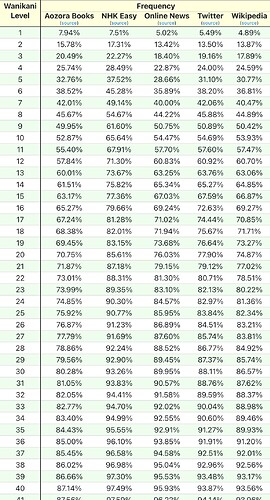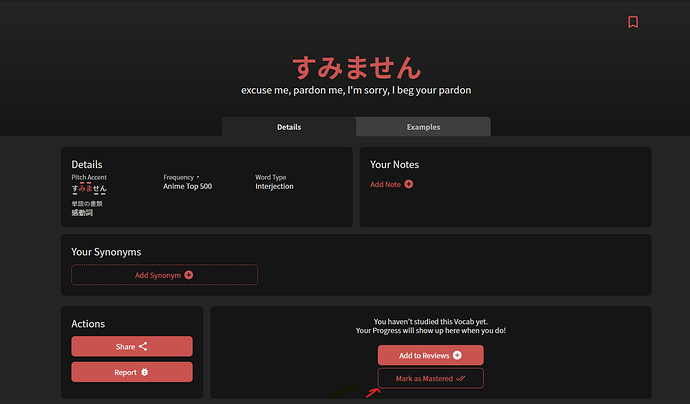So to add to the wanikani discussion (and the heisig method) here is my two cents.
First of all this is a real good thread with a lot of viewpoints on the matter.
I think it’s important to state your background and where you are in your journey.
AND
to have a good understanding what an app will help you learn.
Short answer.
Wanikani will help you read and write kanji. That’s it. you won’t be able to speak Japanese afterwards.
VERY LONG ANSWER
So the first thing I did on my japanese learning journey was learn kanji. I finished heisig. I stopped doing reviews two weeks after completing it.
My reasoning was that if I could get the “tough” part out of the way than my journey would become much easier…
Basicly I thought of it as climbing the mountain and than the rest of my journey would be a nice descend.
I completed heisig in about 8 months.
4 Years later and not being immersed in Japanese I remember nothing from heisig. Well that might not be completely true but looking back I wished I spend that time on conjugations
If while doing heisig/wanikani I would have done grammar and vocabulary as well , it would have been more usefull.
Now I am doing the opposite . I am learning grammar and vocabulary but don’t focus on Kanji. I do some kanji but that is focused on reading and not reproducing it.
What is clear to me now is that language output is completely absent.
I mean speaking. I added listening recently.
Looking back the way I learned English was mainly by listening.
But listening to Japanese doesn’t feel right at low level.
Because my native language is Dutch picking up English was really easy. There is a lot of common ground . Not so in Japanese.
Because grammar and vocabulary between Dutch and English is so similar it really becomes a quest of filling in the few blanks you have.
Japanese is the other way around almost… you start from nowhere.
And while you could argue that you know the English katakana words. I would argue that it might be easier to remember them. But the words are still different.
Anyway back to the point.
I think it’s important to know what you can expect.
And I think , especially when starting to learn a language that is completely different from yours, that you should sort of try to understand what you gain from learning an aspect.
English I learned as a whole completely. I didn’t divide stuff in different aspects. I learned it by watching movies, listening to music and reading on the Internet.
This makes a case for immersing , but immersing in English was really easy. I had a big headstart because my native language is Dutch.
Japanese I divided into parts.
And probably the parts I think most important now is vocabulary and grammar.
Vocabulary , unlike in English, I divide into listening, speaking, reading and writing…
DO I pick up the word in sentence?
CAN I recognize the word while reading.
Those are most important to me now.
Than it probably is using the word correctly in a sentence.
And finally writing it.
Wanikani, and heisig to a lesser extent, will make step 2 easier. And both make writing it easier.
But that’s it.
Learning Kanji only makes those two parts of vocabulary easier.
I probably get into wanikani again after I get far into N3 and I am sort of hopeful that it will be easier to pick up because my vocabulary won’t be starting from scratch.
And I might get frustrated because some content of wanikani is locked.
But I really shouldn’t as wanikani should be used as a tool to learn 2000+ kanji and kanji that I encounter while learning grammar and vocabulary outside wanikani. And mastering that Kanji where I will be will hopefully stick much better than the first time it did with using Heisig and have no Japanese words at all.
Edit:
I was considering yearly plan during wanikani’s end of year sale .
But I didn’t mainly because of the lifetime membership valuation.
If you decide to go lifetime they subtract the outstanding amount of your current membership.
Frankly if they made the upgrade they subtract all that you have paid in the past 13 months it would feel much better.
Here I start to go in meta mode and not buying lifetime straight away if you decide to do it is just throwing money away.
And if you don’t stick with it for whatever reason it is a huge investment. Much bigger than getting lifetime membership here.
anyway I will be really tempted to make that commitment when I have reached my goals this years.





 .
.




 ! You know what would be a fairly decent solution? Might take a bit of work, depending on how their codebase and database are set up, but:
! You know what would be a fairly decent solution? Might take a bit of work, depending on how their codebase and database are set up, but: I didn’t realize how nice it is to have grammar and vocab in one place until recently lol.
I didn’t realize how nice it is to have grammar and vocab in one place until recently lol.